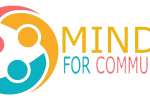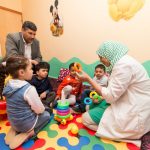Basics About Development and Delays
Kids don’t develop skills on a strict timetable. For example, some babies start walking as young as 9 months, while others don’t take their first steps until 15 months. Both of those babies are within the range of typical development. And minor differences in when kids perform a skill usually aren’t cause for concern.
But a developmental delay is more than just being “slower to develop” or “a little behind.” It means your child is continually behind in skills other kids his age have.
For example, a baby who isn’t rolling over by 4 months may be just a little behind in that one skill.
But if he also isn’t able to hold his head up and push up when lying on his tummy, he’s behind in more than one motor skill. That’s a sign of a developmental delay.
The Difference Between a Developmental Delay and a Developmental Disability
Doctors sometimes use the terms “developmental delay” and “developmental disability” to mean the same thing. They’re actually not the same thing, but it is sometimes difficult to determine whether a young child has a delay or a disability, or why.
Developmental disabilities are issues that kids don’t outgrow or catch up from, though they can make progress. They aren’t the same as learning disabilities, but they can make learning more difficult. Some conditions that can cause developmental disabilities include Down syndrome, Angelman syndrome, autism, fetal alcohol spectrum disorders (FASD) and brain injuries.
Developmental delays may be caused by short-lived issues, such as a speech delay being caused by hearing loss from ear infections or a physical delay being caused by a long hospitalization. Delays may also be early signs of learning and attention issues. While it’s not always clear what is causing the delay, early intervention can often help kids catch up. Some kids still have delays in skills when they reach school age. In that case, they may be eligible to receive special education services.
If a child isn’t catching up as quickly as expected, a specialist may suggest doing an evaluation to get a better sense of what’s going on. It could also help guide the types of services and supports that would meet his needs.
Five Areas of Skill Development and Possible Delay
A developmental delay can occur in just one area or in a few. A global developmental delay is when kids have delays in at least two areas.
Kids develop skills in five main areas of development:
1. Cognitive (or thinking) skills: This is the ability to think, learn and solve problems. In babies, this looks like curiosity. It’s how your child explores the world around him with his eyes, ears and hands. In toddlers, it also includes things like learning to count, naming colors and learning new words.
2. Social and emotional skills: This is the ability to relate to other people. That includes being able to express and control emotions. In babies, it means smiling at others and making sounds to communicate. In toddlers and preschoolers, it means being able to ask for help, show and express feelings and get along with others.
3. Speech and language skills: This is the ability to use and understand language. For babies, this includes cooing and babbling. In older children, it includes understanding what’s said and using words correctly and in ways that others can understand.
4. Fine and gross motor skills: This is the ability to use small muscles (fine motor), particularly in the hands, and large muscles (gross motor) in the body. Babies use fine motor skills to grasp objects. Toddlers and preschoolers use them to do things like hold utensils, work with objects and draw. Babies use gross motor skills to sit up, roll over and begin to walk. Older children use them to do things like jump, run and climb stairs.
5. Activities of daily living: This is the ability to handle everyday tasks. For children, that includes eating, dressing and bathing themselves.
There is no one cause of developmental delays, but some risk factors include:
– Complications at birth: Being born too early (prematurely); low birth weight; not getting enough oxygen at birth.
– Environmental issues: Lead poisoning; poor nutrition; exposure to alcohol or drugs before birth; difficult family situations; trauma.
– Other medical conditions: Chronic ear infections; vision problems; illnesses, conditions, or injuries that have a significant and long-term effect on a child’s day-to-day activities.
Sometimes parents worry that they might have contributed to their child’s delays. That’s usually not the case. For example, teaching a child more than one language does not lead to speech or language problems. And as one mother shares, even though it can be “heartbreaking” to hear the results of an evaluation, in the end, it’s better to focus on next steps and ways to help.
The Link Between Developmental Delays and Learning and Attention Issues
In young kids, delays can be the first sign of learning and attention issues. For example, speech and language delays may point to a learning issue or a communication disorder.
It’s not always easy to make the link between delays and learning and attention issues until kids start school. That’s when teachers can see how kids do in areas like math, reading and spelling. They can also see how well kids focus in class.
The school can also do formal testing to find out more about your child’s strengths and weaknesses. The tests show how kids’ skills compare to those of their peers. They also show how kids think and solve problems. The results can help to determine whether a child has a learning or attention issue.
Source: understood








You must be logged in to post a comment.